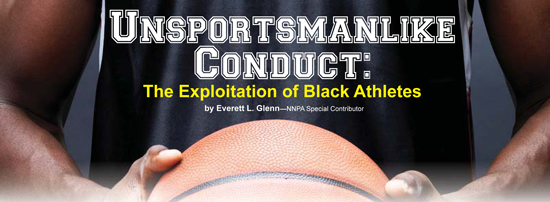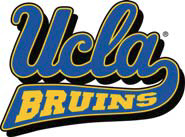Unsportsmanlike Conduct: The Exploitation of Black Athletes
By Everett L. Glenn -NNPA Special Contributor- | Last updated: Dec 30, 2013 - 12:59:51 PMWhat's your opinion on this article?

|
WASHINGNTON (NNPA) - Under its television deal, each Big-10 university will receive $24.6 million annually. The Pac-12′s new television deal will pay each member $22 million a year. Each member of the Big 12 will get $20 million and ACC universities will receive $17 million when each academic year kicks off.
To put those figures in perspective, the annual payout for a single institution in those conferences is larger than the combined gross revenue ($16 million) of four Black conferences—the CIAA, MEAC, SIAC and SWAC.

|
The salary of a football and a basketball coach, Alabama’s Nick Saban ($4.8 million) and Kentucky’s John Calipari ($3.7 million base/$31.65 million deal), is greater than the combined salaries of the 96 head coaches of Historically Black Colleges and Universities (HBCU) Division 1AA and Division II basketball and football teams, and nearly 50 percent of their combined $16 million revenue. And that’s the income of just two coaches.
Although almost all of the head coaches at major universities are White, most of the money is generated by Black athletes.
“Ninety percent of the NCAA revenue is produced by 1 percent of the athletes. Go to the skill positions—the stars. Ninety percent are Black,” says Sonny Vaccaro, who since signing his pioneering shoe contract with Michael Jordan in 1984 also profited off the labor of the Black athlete by building sponsorship empires successively at Nike, Adidas and Reebok.
Two California universities are a case in point.
Black students represent less than 5 percent of the UCLA and University of Southern California student bodies. Nearly 43 percent of the USC football roster and 70 percent of its starters are Black. Black athletes make up nearly 90 percent of the USC men’s basketball team.

|
According to NCAA President Mark Emmert, basketball and football revenue at those schools funds $2 billion in scholarships annually, making Black athletes the single largest generator of scholarship dollars besides the federal government. At USC, Black talent supports scholarships for 600 mostly White athletes and salaries for 94 coaches as well as 615 scholarships and salaries for 89 coaches at UCLA.
While Black athletes dominate the UCLA and USC rosters, their academic success lags behind White athletes, according to the annual NCAA Graduation Success Rate Report. During the 2011-12 school year, USC graduated 43 percent of its Black football players, compared to 67 percent of White players, according to University of Pennsylvania’s Center for the Study of Equity in Education.
USC’s basketball team fared even worse, with a 43 percent Graduation Success Rate (the percentage of scholarship athletes who graduate within six years of initial enrollment), the worst in the PAC-12.

|
Travel east to Ohio State—or anywhere else—and the pattern is the same.
Black athletes represent 52.9 percent of OSU’s basketball and football rosters and dominate among its star players, fueling a nearly $130 million athletic department budget on a campus where Black males represent only 2.7 percent of the student body.
And like UCLA and USC, the OSU Black athletes trail their White teammates in graduation success. Ohio State football tied for fifth in the Big Ten, according to the most recent graduation data. The men’s basketball team, with a graduation rate of 46 percent, ranked last in the Big Ten.
The disparity between the graduation rate for OSU’s Black football players, at 38 percent, and all student-athletes, at 71 percent, representing the highest disparity in the Big-10. The disparity between the graduation rate of Black athletes and the rest of the OSU student body is the second-worst in the Big-10, a 36 percent difference. The 13 point disparity in graduation rates between Ohio State’s Black basketball and football players and all Black students is also the largest among Big-10 schools.
With the exception of Moody Nolan, a Columbus-based architectural firm, no Black contractors have participated in any significant way on any of the sports-related construction at Ohio State. And the reported $500,000 gift made by former All-American Michael Redd to sponsor the lobby of the new $19 million training facility, the largest gift ever by a former OSU player, did not alter the picture.
If any former star Black athletes blossom into successful business owners, they get shut out again because of the lack of participation of Black businesses and professionals.
Blacks were not included in USC’s $140 million Galen Center, a 255,000 square-foot basketball arena with 10,258 seats. A 45,000 square-foot attachment contains additional practice room with three sections with enough space for four full basketball courts or nine volleyball courts as well as space for coaches and administrative offices.
Nor were they included in the $70 million John McKay Center, a 110,000-square-foot athletic and academic facility that houses meeting rooms, coaches’ offices and a locker room for the football program, as well as the Stevens Academic Center (including space for tutoring, counseling, study and computer rooms for student-athletes), a weight room, an athletic training room and a state-of-the-art digital media production facility for all of USC’s 21 sports.
Another $177 million was spent on renovation to the Rose Bowl and $185 million in renovation to Pauley Pavilion at UCLA. Not a single Black contractor participated on any of the projects. Two Hispanic firms received contracts worth approximately 6 percent of the Pauley Pavilion project, according to UCLA officials. USC officials refused to respond to inquiries about participation by Black contractors and professionals on the Galen and John McKay Centers.
While White colleges and industry stakeholders (networks, sponsors, apparel companies, etc) are reaping huge financial rewards off Black athletic talent, the people who make it all possible are not sharing in the benefits. Blacks are undoubtedly the stars on the football field and basketball courts. But economically, Blacks remain confined to the sideline.
(As a sports agent, Attorney Everett Glenn has negotiated contracts for some of the biggest names in sports, including NFL Hall of Famers Jerry Rice, Richard Dent and Reggie White as well as 11 first round draft picks. He has also had a front-row seat observing how Black athletes and the Black community are exploited, enriching others while leaving the community and, ultimately, the athletes themselves destitute.
Sports is a $500 billion per year industry, but few of those dollars return to the African-American community. According to Sports Illustrated, by the time former NFL players have been retired for two years, nearly 80 percent of them “have gone bankrupt or are under financial stress because of joblessness or divorce.” Within five years of retirement, approximately 60 percent of former NBA players are broke.
After more than three decades of looking at this tragedy on the collegiate and professional level, Attorney Glenn pulls back the cover on these practices in a 3-part series for the NNPA News Service and, more importantly, outlines what can be done to halt the wholesale exploitation and initiate economic reciprocity. Everett L. Glenn of the National Sports Authority can be reached at 562.619.8460 or [email protected].)
INSIDE STORIES AND REVIEWS
-
-
About Harriett ... and the Negro Hollywood Road Show
By Rabiah Muhammad, Guest Columnist » Full Story -
Skepticism greets Jay-Z, NFL talk of inspiring change
By Bryan 18X Crawford and Richard B. Muhammad The Final Call Newspaper @TheFinalCall » Full Story -
The painful problem of Black girls and suicide
By Charlene Muhammad -National Correspondent- » Full Story -
Exploitation of Innocence - Report: Perceptions, policies hurting Black girls
By Charlene Muhammad -National Correspondent- » Full Story -
Big Ballin: Big ideas fuel a father’s Big Baller Brand and brash business sense
By Bryan Crawford -Contributing Writer- » Full Story






 Click Here Stay Connected!
Click Here Stay Connected!








